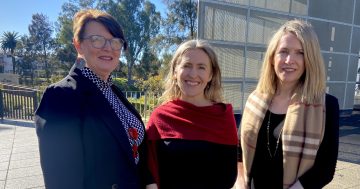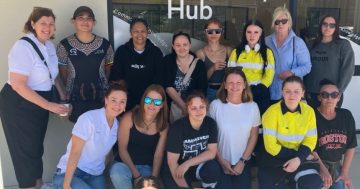
Regional centres like Wagga are in line for unprecedented opportunities. Photo: Shutterstock.
After being largely ignored for decades, regional New South Wales is in the middle of an infrastructure renaissance with billions of dollars pouring into projects across the state.
But are we ready for the boom?
Business NSW Murray-Riverina regional manager Anthony McFarlane has warned that a lack of coordination could further aggravate the housing and skills crunch.
“It goes without saying that COVID has turned regional Australia into the flavour of the month and I think everyone has realised that the Riverina, in particular, is the place to be and invest,” he said.
“We’re seeing that in terms of domain searches on properties in Wagga all the way through to major infrastructure projects.
“It’s going to be a boom time for construction jobs and jobs in Australia’s renewable energy future, but that also brings challenges.”
A new Business NSW report entitled Down to the Wire outlines some of these challenges.
“The Riverina Murray is already struggling to meet businesses’ need for skilled workers and to provide sufficient housing,” Mr McFarlane explained.
“The Riverina Murray is the canary in the coal mine for regional NSW and how we can manage the influx of demand for housing and skilled workers and the negative impact that can have on local communities.”
The infrastructure boom in our region is unprecedented, with more than $20 billion being splashed on projects that are either funded or underway, and there are more to come.
Projects like the Inland Rail, Energy Connect and increased defence spending will create thousands of ongoing construction jobs in regional centres.
“The worst-case scenario is that the local regional economies in NSW are stretched to breaking point in the coming years, with skilled workers poached from local businesses as more projects come online and housing shortages become more acute,” Mr McFarlane said.
The report calls on the Federal Government to create a position to improve collaboration and coordination between projects in the form of a regional Infrastructure Coordinator General.
“There is a real opportunity for the new Federal Government to address these challenges and, in its review of Infrastructure Australia, create a regional Infrastructure Coordinator General function genuinely empowered to manage the demands from different government departments and non-government infrastructure providers to maximise each project’s legacy for local communities,” Mr McFarlane said.
“This role could also support engagement and co-design between industry and education in the region and address any inadequacies in relevant education and training offerings.”
Efforts to improve communication between training institutions and businesses were a key focus of the Committee 4 Wagga’s business summit in April, and Mr McFarlane says progress has already been made.
“TransGrid and Charles Sturt (University) continue to collaborate to support the projects in the region under their memorandum of understanding,” he said.
“We’re also seeing better work in matching the pipeline of apprentices needed on this Snowy 2.0 project.
“But as the report calls out, there’s certainly room for further collaboration between industry and our education providers.”
The report also highlights the need to better promote regional opportunities.
“I think that the call to action is to communicate the once-in-a-generation careers that are going to be on offer off the back of these projects,” Mr McFarlane said.
“We want to maximise opportunities for the local community, but there’s also going to be an element where we have to go out to the rest of the country and beyond and talk up amazing careers that will be available in these infrastructure projects.”
The full report can be read here.
Original Article published by Chris Roe on Region Riverina.
















